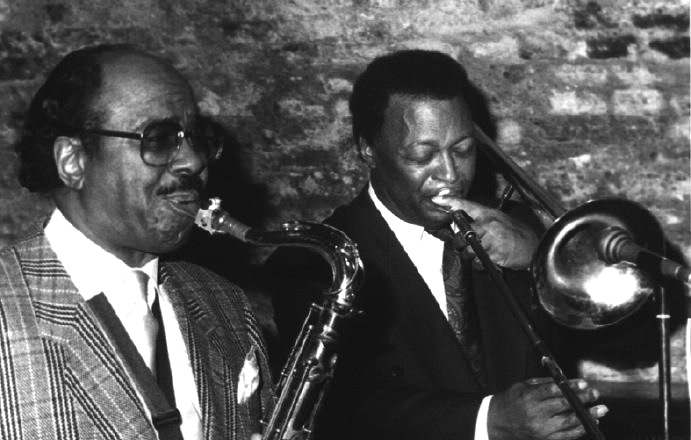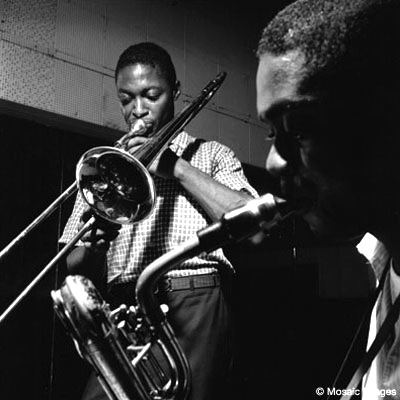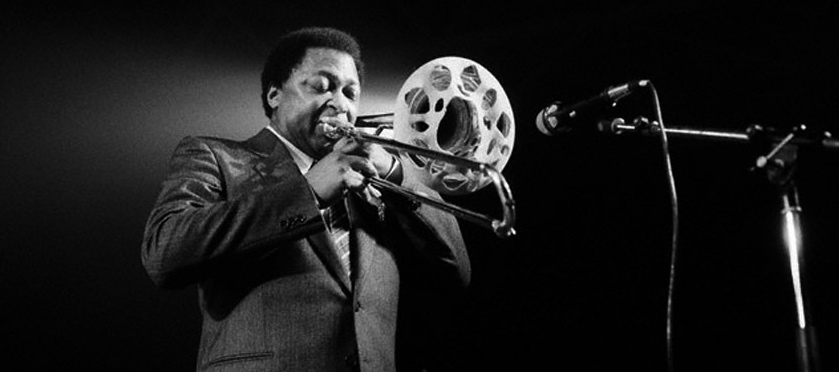
Curtis DuBois Fuller (trombonist) was Detroit, Michigan in 1934. Fuller’s Jamaican-born parents died when he was young, and he was raised in an orphanage. He came to music late, playing the baritone horn in high school and switching to the trombone at age 16. Detroit, at the time, was the breeding ground for an astonishing pool of fresh, highly individual talent. He was a schoolfriend of Paul Chambers and Donald Byrd, and also knew Tommy Flanagan, Thad Jones and Milt Jackson.
In 1953, Curtis left the local scene to serve his two-year stint in the army, where he met and played with Paul Chambers, Cannonball Adderley and Junior Mance among others. When he returned home, he began working with Yusef Lateef’s quintet. The Lateef quintet came to New York in April 1957 to record two albums for Savoy and a third produced by Dizzy Gillespie for Verve.
Word of Curtis’s talent spread rapidly around New York. Although he initially came under the spell of J.J. Johnson and listed Jimmy Cleveland, Bob Brookmeyer and Urbie Green among his favorites, Fuller came to New York at the age of 22 with a unique style and sound.
In May, after being in town for about a month, he recorded with Paul Quinchette and made his first albums as a leader: two quintet albums for Prestige with Sonny Red featured on alto. Like the Blue Note debuts by Kenny Burrell and Thad Jones the prior year, he used mostly transplanted Detroit players.

Alfred Lion of Blue Note Records first heard him playing with Miles Davis in the late 1950s, and featured him as a sideman on record dates led by Sonny Clark and John Coltrane; Fuller’s work on the latter’s Blue Train album is probably his best known recorded performance. Fuller led four dates for Blue Note, though one of these, an album with Slide Hampton, was not issued for many years. Other sideman appearances over the next decade included work on albums under the leadership of Bud Powell, Jimmy Smith, Wayne Shorter, Lee Morgan and Joe Henderson -a former roommate at Wayne State University in 1956.
Curtis Fuller was also the first trombonist to be a member of the Art Farmer/Benny Golson Jazztet, later becoming the sixth man in Art Blakey’s Jazz Messengers in 1961, staying with Blakey until 1965. In the early 1960s, he recorded two albums as a leader for Impulse! Records, having also recorded for Savoy Records and Epic after his obligations to Blue Note had ended. In the late 1960s, he was part of Dizzy Gillespie’s band, that also featured Foster Elliott. He went on to tour with Count Basie and also reunited with Blakey and Golson.

During the ’70s, he experimented for a time playing hard bop arrangements in a band featuring electronic instruments, and heading a group with guitarist Bill Washer and Stanley Clarke. He concluded that phase with the 1973 album Crankin‘.
Fuller toured with the Count Basie band from 1975 to 1977, and did dates for Mainstream, Timeless, and Bee Hive. He also co-leader of the quintet Giant Bones with Kai Winding in 1979 and 1980, and played with Art Blakey, Cedar Walton, and Benny Golson in the late ’70s and early ’80s. During the ’80s, Fuller toured Europe regularly with the Timeless All-Stars, and performed and recorded with the revamped Jazztet in addition to leading a fine session for Savoy in 1993.
Fuller continues to perform and record, and is currently a faculty member of the New York State Summer School of the Arts (NYSSSA) School of Jazz Studies (SJS).
On January 13, 2010, Curtis’ wife, Catherine Rose Driscoll Fuller passed away.